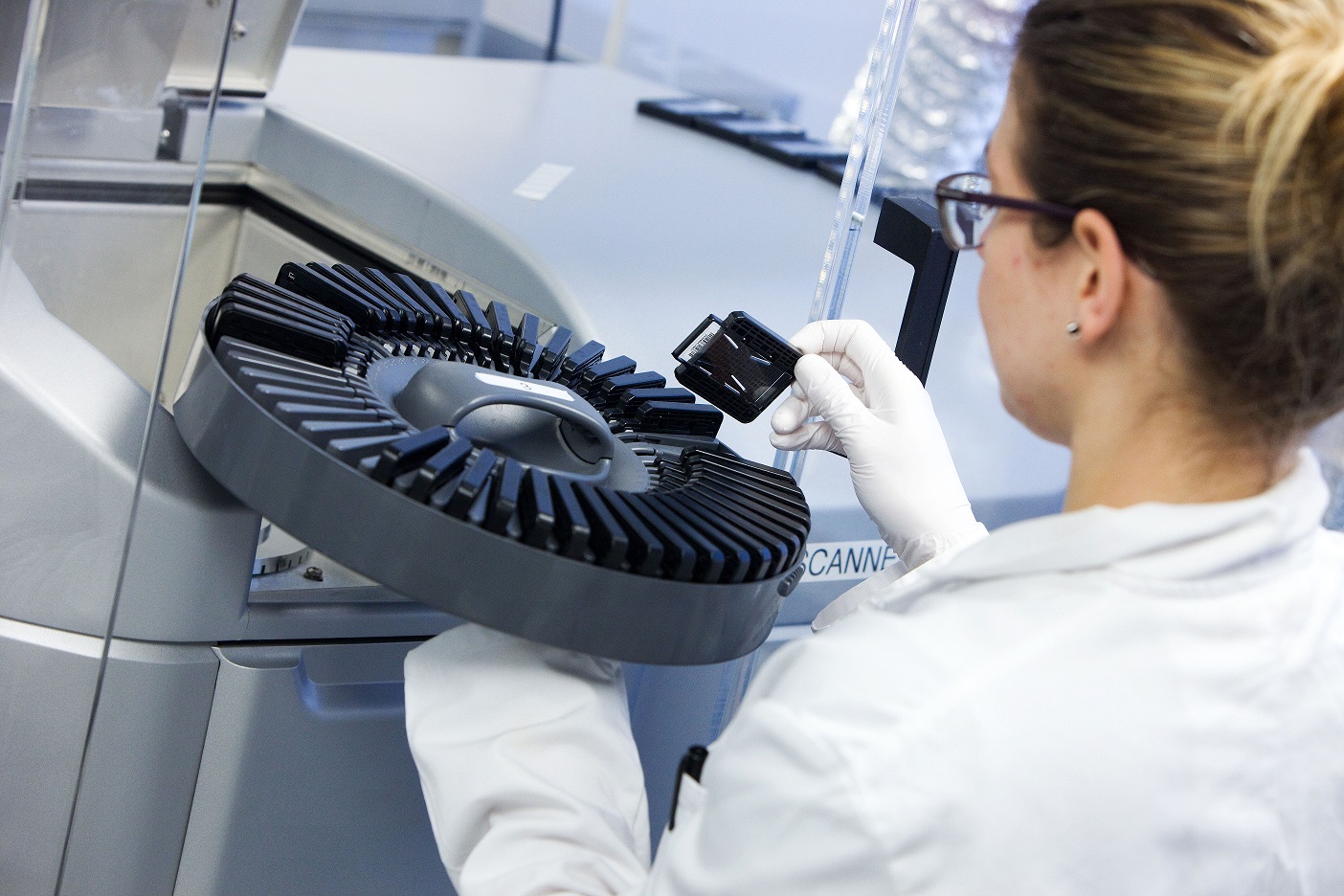OGT Expands Leading Constitutional Array Range

Complete the form below to unlock access to ALL audio articles.

Oxford Gene Technology (OGT) has announced the launch of its new CytoSure Constitutional v3 +LOH array for comprehensive genetic analysis of developmental delay disorders. Alongside the latest content for exon-level copy number variation (CNV) coverage, research-validated single nucleotide polymorphism (SNP) probes facilitate detection of loss of heterozygosity (LOH), enabling insightful and cost-effective analysis on a single array. The unique CNV content, already available on OGT’s CytoSure Constitutional v3 array, has received significant acclaim, with several major laboratories recently switching to this platform.
Utilising the latest discoveries from ClinGen and the Deciphering Developmental Disorders (DDD) study, 1, 2 OGT has incorporated every known region of the genome linked to developmental disorders to deliver the most up-to-date array platform for CNV detection currently available. The CytoSure Constitutional v3 array content covers 502 targeted genes, with high probe density across the most biologically relevant regions enabling the detection of single-exon aberrations. Now with the addition of SNP probes on the new CytoSure Constitutional v3 +LOH array, a broader range of copy-neutral genetic factors can be investigated on a single array, including LOH and uniparental disomy (UPD). Moreover, the SNP probe coverage also functions as an additional validation of CNVs, reducing the need to perform follow-up investigations.
Powerful data analysis and interpretation of these advanced arrays is also streamlined with OGT’s CytoSure Interpret Software, which is provided with each array alongside full on-site training. Innovative features enable automated data analysis, minimising user intervention and maximising both consistency and speed of interpretation.
The new CytoSure Constitutional v3 +LOH array builds on the existing success of the Constitutional v3 array, which has seen significant uptake in major clinical research laboratories across Europe and North America. Adding to previous National Health Service (NHS) tender success, OGT’s platform was recently selected by the Cardiff and Vale Health Board (Wales, UK). This stringent selection process compared a variety of arrays, with OGT being chosen due to the quality of the content, which is set to enhance the service of regional NHS laboratories around the country.
West Midlands Regional Genetic Laboratory (WMRGL, Birmingham, UK) has also recently converted to OGT from an alternative supplier. Consultant Clinical Scientist at WMRGL, Dom McMullan explained: “Our decision to switch to OGT over alternative platforms was based largely on the quality of the evidence base behind the array design, allowing for a very comprehensive analysis of exons, genes and regions key in postnatal and prenatal applications. In addition the speed, flexibility and versatility of OGT’s software was very important in our decision making. Following a rigorous validation, we found this platform out-performed all others. The support provided by OGT during and after the transition has also been first-class”
Product Manager at OGT, David Cook, commented: “The expansion of our rapidly growing array portfolio to offer powerful exon-level CNV content coupled with SNP probes delivers an uncompromising best of both worlds for clinical researchers. We are delighted to witness the rapid adoption of our technology by a number of additional, prestigious laboratories this year — which really attests to the quality of our arrays and also our dedicated customer support.”
References
1. Large-scale discovery of novel genetic causes of developmental disorders. The Deciphering Developmental Disorders Study. Fitzgerald, T.W. et al, Nature 519, 223–228 (12 March 2015)
2. Genetic diagnosis of developmental disorders in the DDD study: a scalable analysis of genome-wide research data. Fitzgerald, T.W. et al, The Lancet 385, No. 9975, p1305–1314, (4 April 2015)

